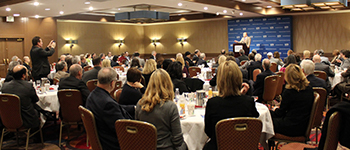Returning to the office? Double check your workplace safety
The office setting sure has changed over the past few years. Many of us are returning to the office full-time, others are working from home and some of us are working a hybrid schedule. No matter what our work schedule is we need to stay diligent about the office dangers lurking around the corner. Just because we were gone doesn’t mean the dangers are gone. Let’s review some of these hazards in the office setting.
Good Housekeeping is one of the keys to a safe office workplace. When you return to the office look for some of these potential dangers and be sure to report them.
- Keep walkways and hallways free of clutter, such as boxes and cords.

- If you see damaged flooring or carpet, report it immediately.
- Use a stepstool – not a chair – to reach items.
- Be sure to close drawers to prevent people from walking into them.
- When carrying material make sure it doesn’t block your view.
- When closing drawers, be sure to use the handle to prevent pinching fingers.
- Always be aware of doors opening, walking around corners, and passing by cubicles.
- When stacking material, be sure the heavier items are stacked on the bottom.
- Wet floors, especially on tile, can be a serious slip hazard.
Fire safety is important to all employees. Review some of these fire hazards found in the office setting.
- Check cords and electrical equipment (coffee makers, toasters, microwaves, space heaters, etc.) for damage.
- Review your Fire Prevention Plan (FPP) and Emergency Action Plan (EAP) and the employee reporting procedure in the event of an emergency. (Don’t forget to re-familiarize yourself with other office policies).
- Do not block exit routes, fire extinguishers or electrical panels.
- Do not allow trash to accumulate as this can add to fire.
Working safely at our desk or cubicle will help in reducing or eliminating potential ergonomic injuries. When working at your workstation remember these work practices.
- Use adjustable equipment, such as desk, chairs, and monitors.
- When sitting, be sure to keep your feet on the floor. Do not let them dangle over the floor.
- Ensure the monitor is correct distance for your vision.
- Be sure to take periodic breaks to give your body a rest.
- Place your keyboard and mouse correctly on your desk to prevent neck and shoulder pain.
- If typing from a document, use a document holder instead of looking down.
- If you have a new ergonomically safe workstation, understand how to use it.
- When sitting in your chair be sure not to lean too far forward or too far back.
- There are many stretching exercises that you can perform throughout the day.
No one office setting is the same so be sure to identify the hazards at your location. Consider creating a checklist and schedule a periodic walkthrough to identify any safety issues. Remember Office safety is everyone’s responsibility and should be incorporated into your daily work practices.
For more information, please contact Sedgwick’s Andy Sawan at 330.819.4728 or andrew.sawan@sedgwick.com









